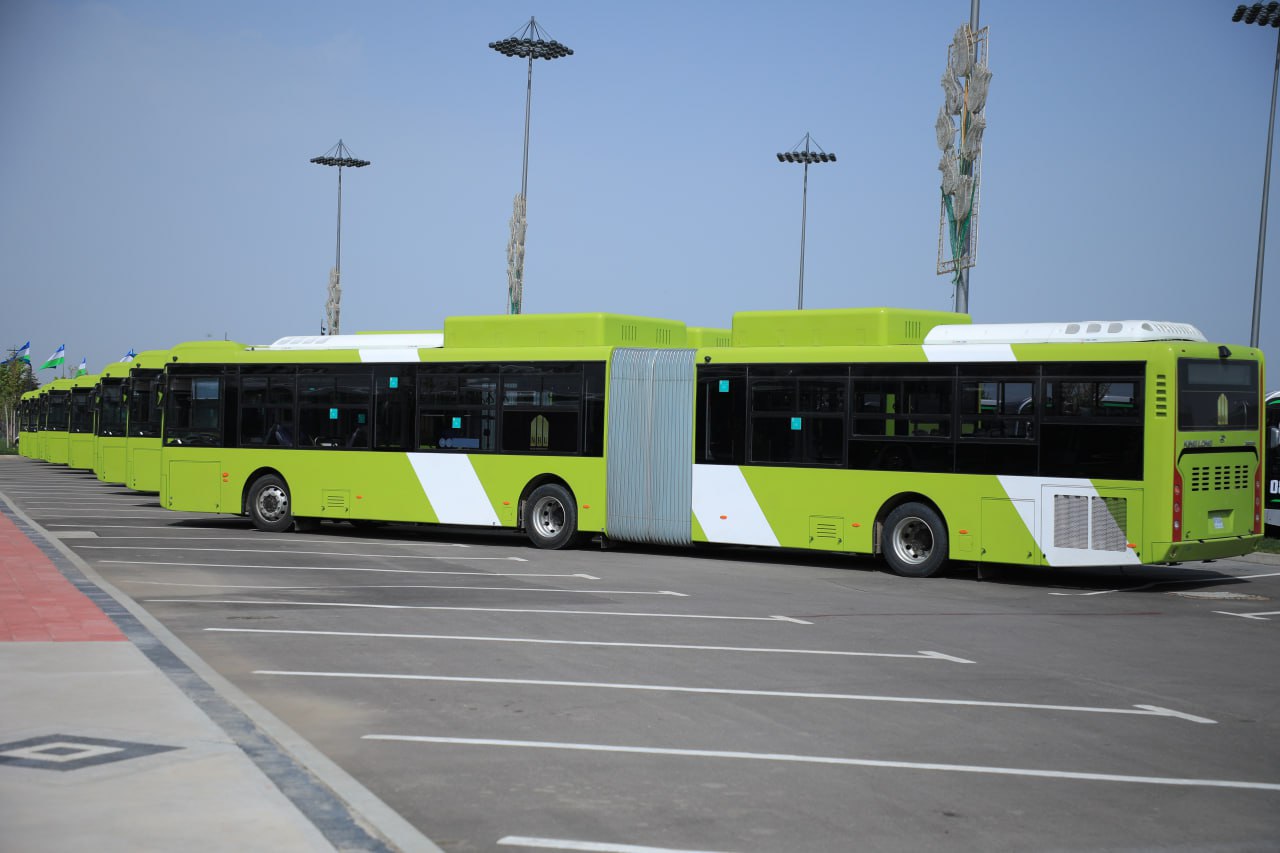This article is also available in:
Русский (Russian)
The introduction of BRT (Bus Rapid Transit) in Tashkent has been postponed once again to 2025, marking yet another chapter in a long history of promises and delays. Back in 2019, specialists from South Korea proposed this metrobuses system, which was expected to revolutionize public transport in the capital. More than five years have passed since then, but unfortunately, not a single bus has operated on the BRT lines. All we see are discussions and plans that have turned into empty hopes.
Why does Tashkent need BRT?
Had the system been launched, it would have been a real breakthrough. Bus Rapid Transit (BRT) was supposed to ease traffic, speed up transportation across the city, and improve the lives of passengers. The constant traffic jams that delay daily life in the city could finally have become a thing of the past. Metrobuses promised a 5-minute interval between buses, which would mean quick and convenient transportation for tens of thousands of residents. This could have radically changed the quality of life in a city suffocating from traffic congestion and disorganized transport.
The idea was that BRT would alleviate the traffic load, as other buses on these routes would no longer run, transferring their passengers to the faster BRT system. Added to this was the idea of reducing environmental harm and cutting costs on fuel and personnel. It seemed like the perfect solution to many problems. But…
Sounds great, doesn’t it?
However, as always in Tashkent, when it comes to implementation, something goes wrong. On paper, the plans seem perfect, but in reality, nothing happens, and if something is done, it’s done poorly. Remember the dedicated bus lanes? Instead of helping passengers, they became a new headache for drivers and other road users.
Let’s get back to BRT
In 2020, two BRT routes were developed: “Chilanzar Clothing Market – Chorsu Shopping Center” and “Chorsu – Tashkent Tractor Plant (TTZ).” In the usual giant ambitions of our officials, the number of routes suddenly grew to seven over a few months of discussions, but not a single real step toward implementing the plans was taken.
By 2021, it seemed something might finally change. A Turkish company, Kalyon Ulaştırma, appeared, promising to reconstruct 24 intersections, including the complex intersection near the “Rossiya” Hotel. It seemed the project was on the home stretch, but again, no. Dreams remained dreams, and promises were just words. Once again, nothing materialized.
Another new hope in 2021
In 2021, a new glimmer of hope emerged. Representatives of Toshshahartranskhizmat stated that the project was practically ready and would soon be launched. The first route would be from the Chilanzar Shopping Complex to the Chorsu Center — about 18 kilometers with 26 stops along the way. The average operational speed of this route was expected to be 25 km/h, with an interval of approximately 5 minutes between rapid buses.
Back then, it was said that one of the advantages of these metrobuses would be their high capacity: they could transport more than 40,000 passengers per day. Waiting times would be reduced, fuel and personnel costs would decrease, and environmental damage from transportation would be reduced by 33%. However, even then, experts acknowledged certain difficulties — there was a risk of road narrowing for other traffic participants due to the allocation of two lanes specifically for BRT, which would create some discomfort for other drivers.
But in 2021, once again, nothing happened. In 2022, Toshshahartranskhizmat started reviewing the project again, as new questions arose regarding its economic feasibility and practicality. After that, there were more words and promises, which led to nothing. And now, in a new decree that approved the Program of Urgent Measures to Improve Air Quality in Tashkent, a new deadline has been set — 2025. And that’s not far off — will our transport officials be able to achieve anything?
A more painful question
Another, more painful question arises: how much money has already been spent on these revisions, discussions, and changes? Funds are being used, while residents continue to stand in traffic, losing their time and patience. Tashkent needs public transport development, and BRT could be the solution, but until these plans move beyond paper, it’s just another example of how loud promises fail to result in real change.
The text has been translated by AI. For more accurate information, please refer to the Russian version of the article


